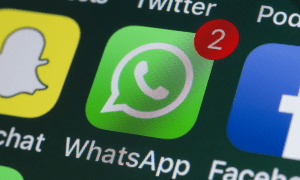WhatsApp is the most popular messaging app for users across the globe with an estimated 1.2 Billion active users sending 50 Billion messages daily. The company introduced end-to-end encryption last year and this week it’s rolling out Two-Step Verification (2SV). This extra layer of security will help prevent someone from accessing your messages.
Enable Two-Step Verification on WhatsApp
To turn it on open the app and go to Settings > Account > Two-Step Verification and tap Enable.


Now enter a six-digit passcode – you’ll need to verify it a second time. You’ll also need to enter an email address in case you need your passcode reset. You have the option to skip this step, but you might not want to as you could be locked out of your account for seven days (more on that below).


Note: Before enabling 2SV, make sure you make a passcode that you can remember easily and enter an email address in case you forget it. Otherwise, you could be locked out of your account for a full week. The company says:
If you have two-step verification enabled, your number will not be permitted to reverify on WhatsApp within 7 days of last using WhatsApp without your passcode. Thus, if you forget your own passcode, but did not provide an email to disable two-step verification, even you will not be permitted to reverify on WhatsApp within 7 days of last using WhatsApp.
We have been advocates of Two-Factor Authentication (2FA) and Two Step Verification since Google started rolling it out for its users several years ago. And we highly recommend you enable it on all of the online services you use that support it.
For more details on the services that support 2FA and 2SV and how to enable it, check out our Two-Factor Authentication Guide.
Also, while we’re on the topic of WhatsApp, you might be interested in the following articles:
1 Comment
Leave a Reply
Leave a Reply








SimplyFred
February 16, 2017 at 7:36 am
I do not have a What’s App account. Sometimes I find something that looks like a What’s App message in my inbox. Are these messages a shield / lure hiding something dangerous like ransomware?